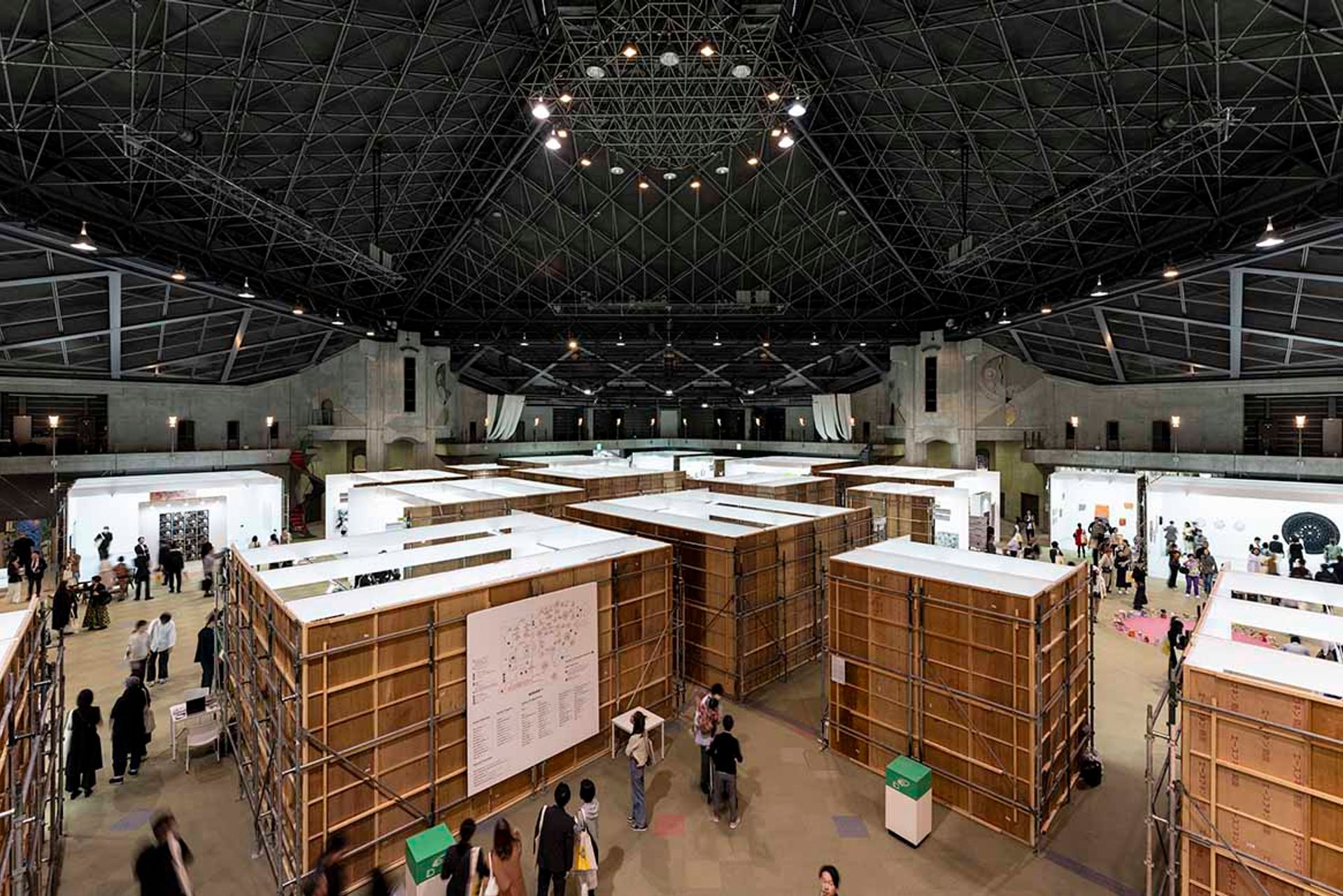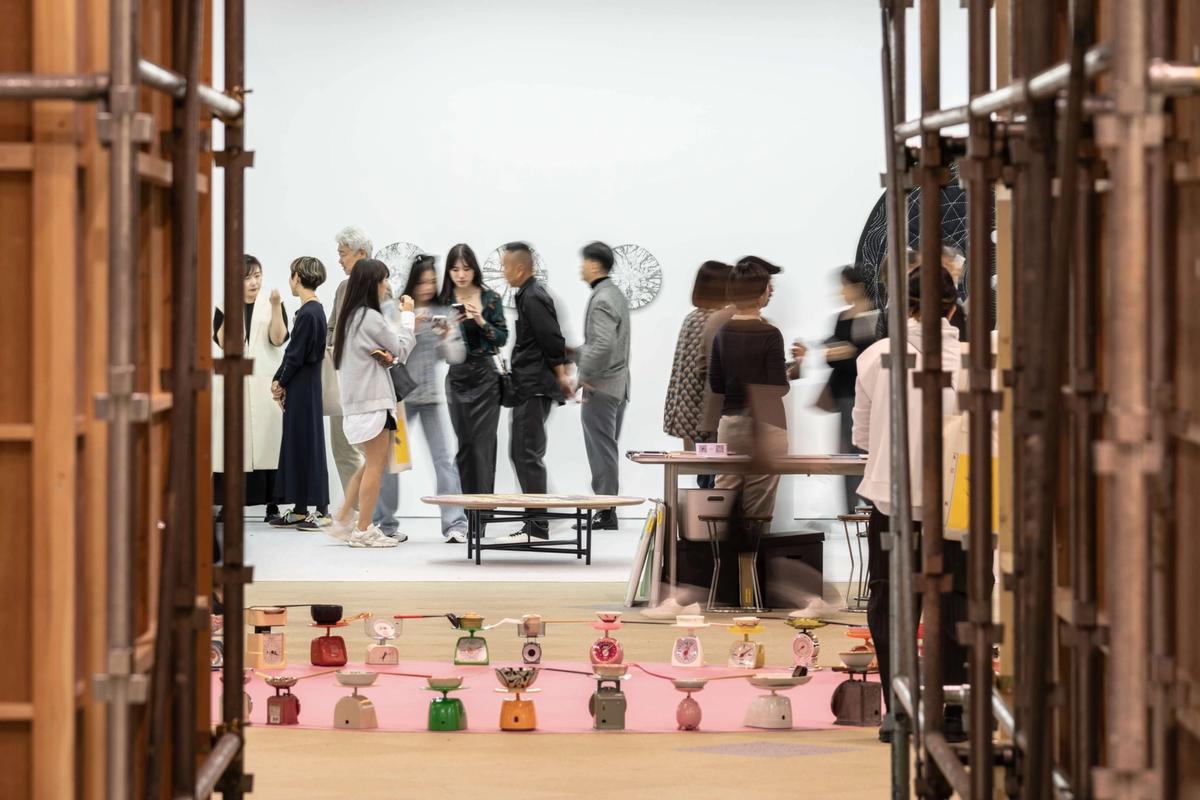The third edition of Art Collaboration Kyoto (ACK) presented a softer, more engaging, and distinctly local alternative to the global glut of art fairs. Of the 64 participating galleries, 27 came from 16 overseas countries and regions. Each of these was invited by a participating Japanese gallery which it shared a stand with. Each of these in the main sector was invited by a participating Japanese gallery which it shared a stand with. A Kyoto-focused section with 11 standalone booths expanded from six last year.
“We offer the platform, then let go,” says ACK's programme director, Yukako Yamashita, of the relatively hands-off approach the fair takes to what is shown show. "Some things are not so easily controlled. This is an organic experiment, and it is important to keep the joy." She says that she doesn’t "see any risk of competition" between the pairings galleries. "It is not like they take a wall each: they communicate, share the booth and shipping fees, and think together."
Centered around the 26 collaborative booths, ACK also offers eleven-gallery side section Kyoto Meetings. Some Kyoto relevance is required: two of Kyoto’s roughly ten contemporary art galleries joined, but for the remainder ties include artists’ heritage or even simply works made during or referencing visits and residencies to the city. Partner exhibitions also are scattered throughout the city, including at heritage temples and shrines. A tightly curated section of works around the main site by ten artists and duos explored the theme Beyond Glitch: Remapping Reality in a Broken World. The topic touches upon the venue, the stunning 1966-built, Sachio Otani-designed Kyoto International Conference Center, which hosted the 1997 meeting resulting in the Kyoto Protocols, making the city a shorthand for ecological activism.
Existing connections between the Japanese and foreign galleries stem from old friendships and, in many cases, joint representation of particular artists. The comparison to a miniature or reunion of Art Basel Hong Kong was frequently heard, due to the caliber of participants.
For Mendes Wood DM, a Sao Paolo-founded gallery with outposts in New York, Brussels, and Paris, the decision to share a booth with Taka Ishii Gallery, from Tokyo and Kyoto, arose from a long-time mutual appreciation of their respective artists, says the Mendes Wood DM sales director Martin Aguilera. By day two, the gallery saw sales of three paintings by Amadeo Luciano Lorenzato in the range of $100,000 to $200,000, two $18,000 works on paper by Patricia Leite, and two paintings by Marcos Siqueira for $12,000. “All three artists are from the region of Minas Gerais, the colloquial heartland of Brazil,” Aguilera says. Buyers were a roughly equal split between Japanese, Japan-based expatriates, and from around the rest of Asia.
A stand shared by Tokyo’s Tomio Koyama Gallery and Busan’s Johyun Gallery had as its focal point a hanging rock sculpture by their shared artist Kishio Suga, who will have a solo show at Johyun next month. The 1960s icon Suga, a longtime friend of Korean artist Lee U-fan, reflects well the spirit of multinational cooperation, said its spokesperson. Tomio Koyama has joined the previous fairs in partnership with New York galleries: Canada in 2022, and Fergus McCaffrey in 2021. As of the second day, the booth had sold around five works for a total of around $500,000, by artists including Lee Bae, Benjamin Butler and Nana Funo. These include Lee Bae’s charcoal-on-canvas work ch2-84 (2003) for $95,000.

The Kyoto International Conference Center (ICC Kyoto)
Courtesy of ACK, Photo by Moriya Yuki
As of day two, the Seoul gallery PBG had sold nothing, but nevertheless director Sopp Lee expressed her hope to return, citing the overall quality of participating galleries and saying they had met a lot of people. On opening day, Tokyo’s Misako & Rosen, along with New York's 47 Canal, had sold four of Trevor Shimizu’s paintings to American collectors for $50,000 each, says the gallery's cofounder Misako Rosen. Taro Nasu and Galerie Eva Presenhuber sold Sam Fall’s Untitled (Sarvisalo, Finland, Apple Blossom Petals 9) for US$93,500 and John Giorno’s I Prefer Crying in a Limo to Laughing in a Bus for US$49500. Taguchi Fine Art sold 14 works by Shigeru Nishikawa for about JPY 5.5 mln total. Karma Gallery sold ten works to a mix of Japanese, Chinese and American collectors.
A number of dealers said that low booth fees facilitated their bringing younger and less known artists to ACK, in order to focus more on exposure than sales. Government backing has, since last year, given the event bonded status, exempting the 10% sales tax normally imposed pre-sale.
Hayashi Yasuta, the director of Japan’s Agency for Cultural Affairs, Arts and Culture Division, told The Art Newspaper that bolstering the arts in Kyoto is a policy priority. While home to a fraction of the contemporary art galleries in Tokyo, Kyoto has a sizeable artist community and several top museums. Yashuta cites Jakarta and Yogyakarta in Indonesia and Bangkok and Changmai in Thailand as complimentary art centres within nations. While ACK is a project of the Kyoto Prefecture and not the national government, the cultural ministry operates a second headquarters in Kyoto. “Nationally, since 2002, it has been clear that Tokyo was overly dominant of the cultural scene," he said. "We realised that Japan needs a second cultural centre."


